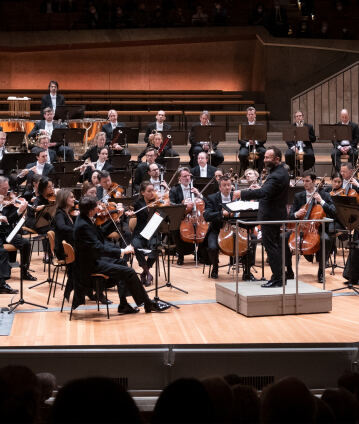Kirill Petrenko conducts Zimmermann, Lutosławski and Brahms

Anyone who wants to continue the symphonic tradition must have self-confidence and creativity. In this concert, Kirill Petrenko presents two composers who took this risk: we hear Witold Lutosławski’s splendidly virtuosic Symphony No. 1 and the Janus-faced Second Symphony by Johannes Brahms, which the composer himself described as a “lovely monster”. The concert opens with Bernd Alois Zimmermann’s sound surface composition Photoptosis.
While the composition of Brahms’s First Symphony took 14 years, the premiere of his Second Symphony followed only 13 months later. Contemporaries such as the influential critic Eduard Hanslick emphasised the accessibility of the new work: if the composer’s debut in the genre had to be listened to “as it were with a magnifying glass” because of its complex polyphony, Brahms’s Second was a piece for “connoisseurs and laymen” and all “who long for good music”. Its character, which is often described as cheerful and optimistic, is not, however, safe from melancholy clouds and dramatic intensifications, due in particular to the pastoral opening melody, the enchanting Ländler theme of the third movement, and the jubilant conclusion of the finale.
The concert opens with Bernd Alois Zimmermann’s study Photoptosis, whose Greek title means “incidence of light”. The densely orchestrated composition, which unfolds over an unchanging rhythmic pulse, illuminates a series of quotations in the middle section that include passages from Beethoven’s Ninth and Scriabin’s Le Poème de l’extase – two works that Kirill Petrenko has already performed with the Philharmoniker to great success.
In contrast to his other three symphonies, Witold Lutosławski’s First follows the classical model with four movements whose characters correspond to the traditional model (fast-slow-scherzo-fast). The Philharmoniker last performed this immensely virtuosic and striking work, described by Lutosławski as “radiant” and “joyful”, in March 1981, with the composer himself conducting.
© 2022 Berlin Phil Media GmbH
Related interviews